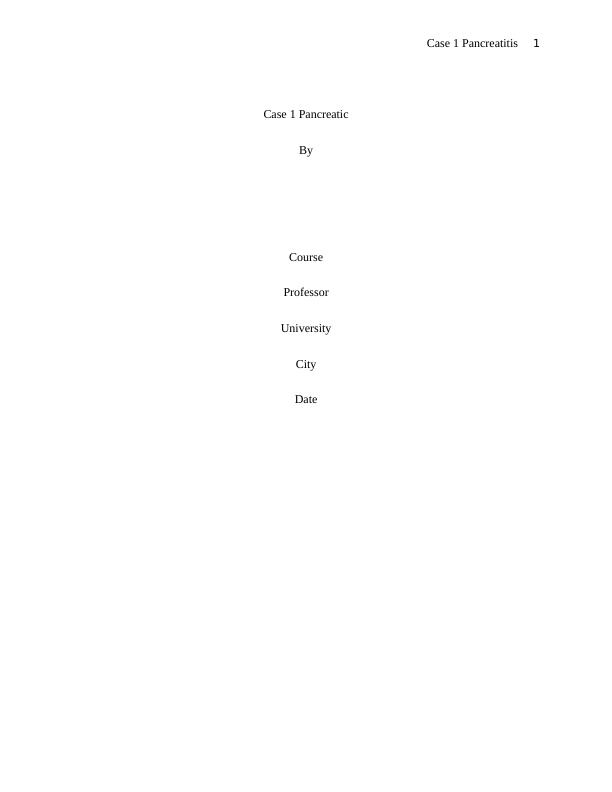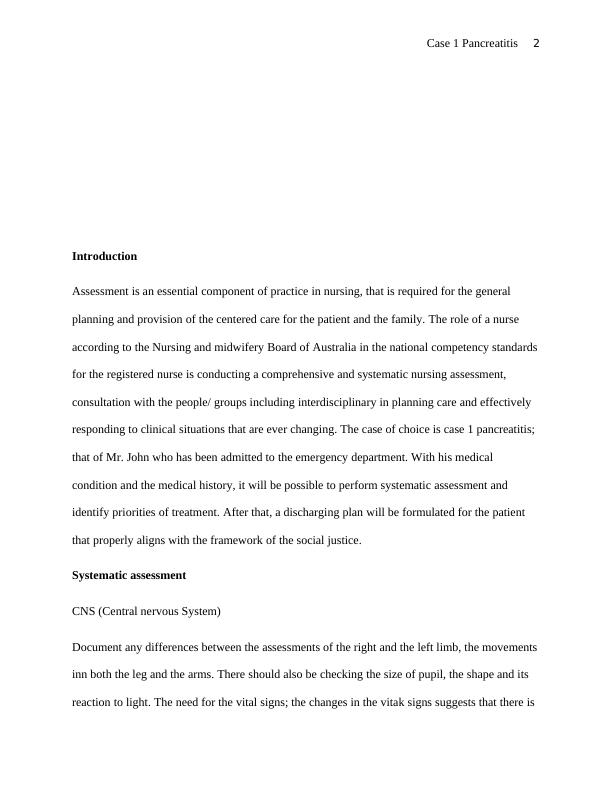Assessment about Pancreatitis 2022
Present a response to a clinical case study involving complex care assessment, planning, and management of a patient with a complex condition.
14 Pages4085 Words20 Views
Added on 2022-09-26
Assessment about Pancreatitis 2022
Present a response to a clinical case study involving complex care assessment, planning, and management of a patient with a complex condition.
Added on 2022-09-26
ShareRelated Documents
End of preview
Want to access all the pages? Upload your documents or become a member.
Nursing Management of the Patient with a Complex Condition Assessment 2022
|9
|3003
|23
Nursing Assessment and Priorities of Care for Pancreatitis Patient
|8
|2963
|472
Clinical Judgement And Reasoning Report 2022
|9
|2456
|28
Nursing: Assessment, Pathophysiology, and Interventions
|9
|2232
|38
Community Acquired Pneumonia: Pathophysiology, Assessment, and Management
|14
|3153
|276
The case study is a hypothetical case study of Mr X
|9
|2373
|22




